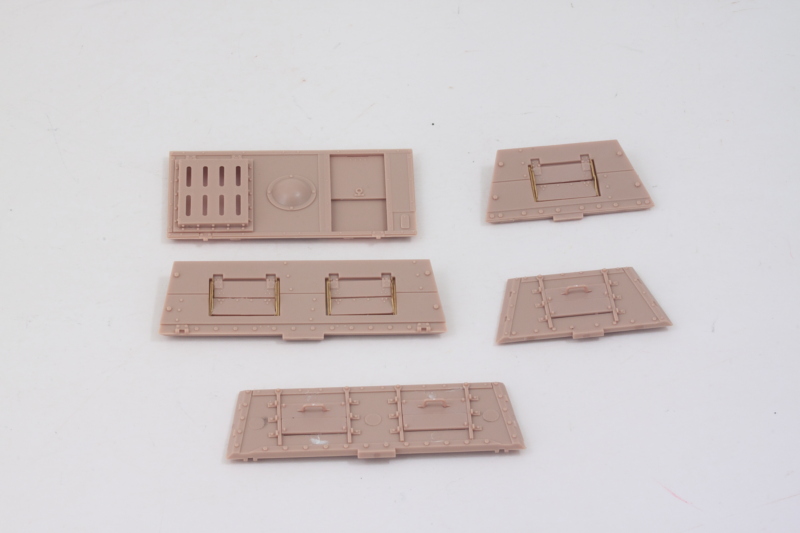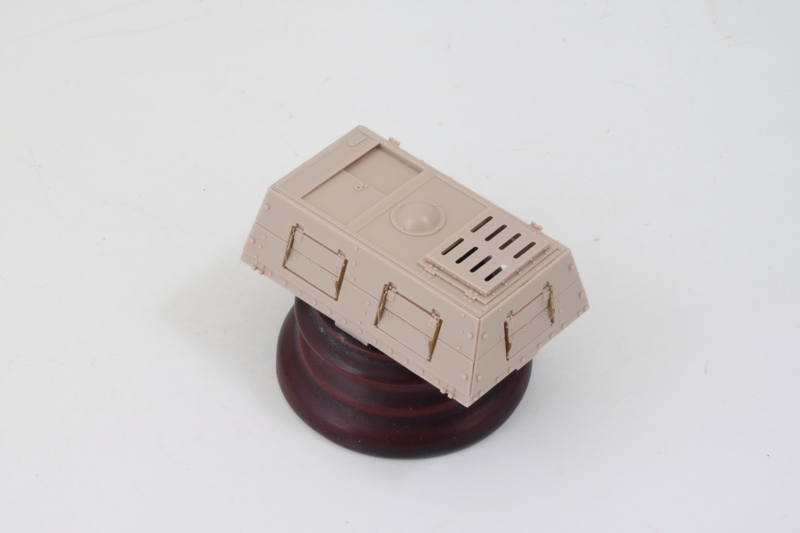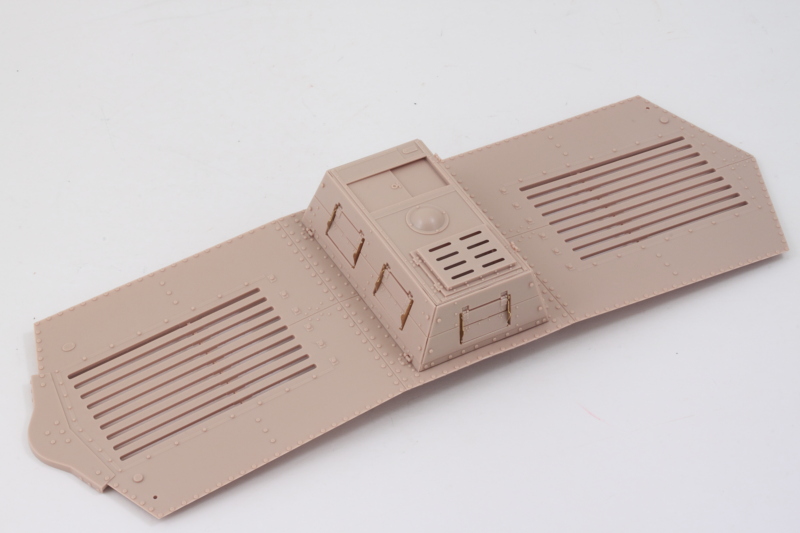Sometimes things that at first glance seem like they will go together quickly can be deceptive in the amount of time needed in reality. Such is the case with the driver's compartment box that is covered under Steps 27-31. What ended up taking the most time was fitting the shutters to all the viewports since there are parts that need to install both inside and out on all four panels that make up the box. Included in those parts are small PE parts that create the support frames for the exterior that allow the covers to be posed either fully closed, half-open, or fully open. No matter which option is chosen, all of the parts are needed to make them work. The instructions include helpful diagrams that show how both the interior and exterior parts should be positioned and it's worth noting that these also apply for the side and front even though the diagrams are only shown once on the step for the rear plate's assembly.
I used an Etchmate to bend the two small PE parts that go in on each side of the outside to hold the folding covers for each port. A bending tool of some kind is certainly necessary as the parts are small but do fit precisely in place with just a touch of liquid glue needed to hold them in place permanently.
Step 30 deals with the roof plate for the box and has an interesting feature in the form of a sliding panel hatch for the commander that is designed to remain slidable if you're careful with the glue and assembly.

Step 31 assembles the box out of the 5 panels. My first instinct was to do this using the hull top to help pull it all together but I did a quick test fit of the roof to the vehicle and realized that the instructions have the box added later for a reason. The hull roof is molded with a slight angle/flex to it and this is useful for ensuring that it mates up properly with the hull before the compartment box is added. If you add the box, you lose some of that flex, making the job harder than it needs to be. With that said, I assembled the box as directed using regular glue to help hold the panels together until I had them positioned properly. Some liquid glue applied to the insides of the joins helped pull it all together nice and square along with the roof panel.

Just to make sure that I had it all lined up correctly, I did a dry-fit with the hull roof. Fits beautifully and I'll leave it like that until the glue fully sets up to avoid any complications.

Doing a quick test fit with the hull showed that I will need to spray some Flat Black under the large grate panels in the fighting compartment and under the driver's hatch to avoid any bare plastic being visible from the interior. Once that's taken care of, I can add the roof and compartment as the final elements before starting the exterior paint work.